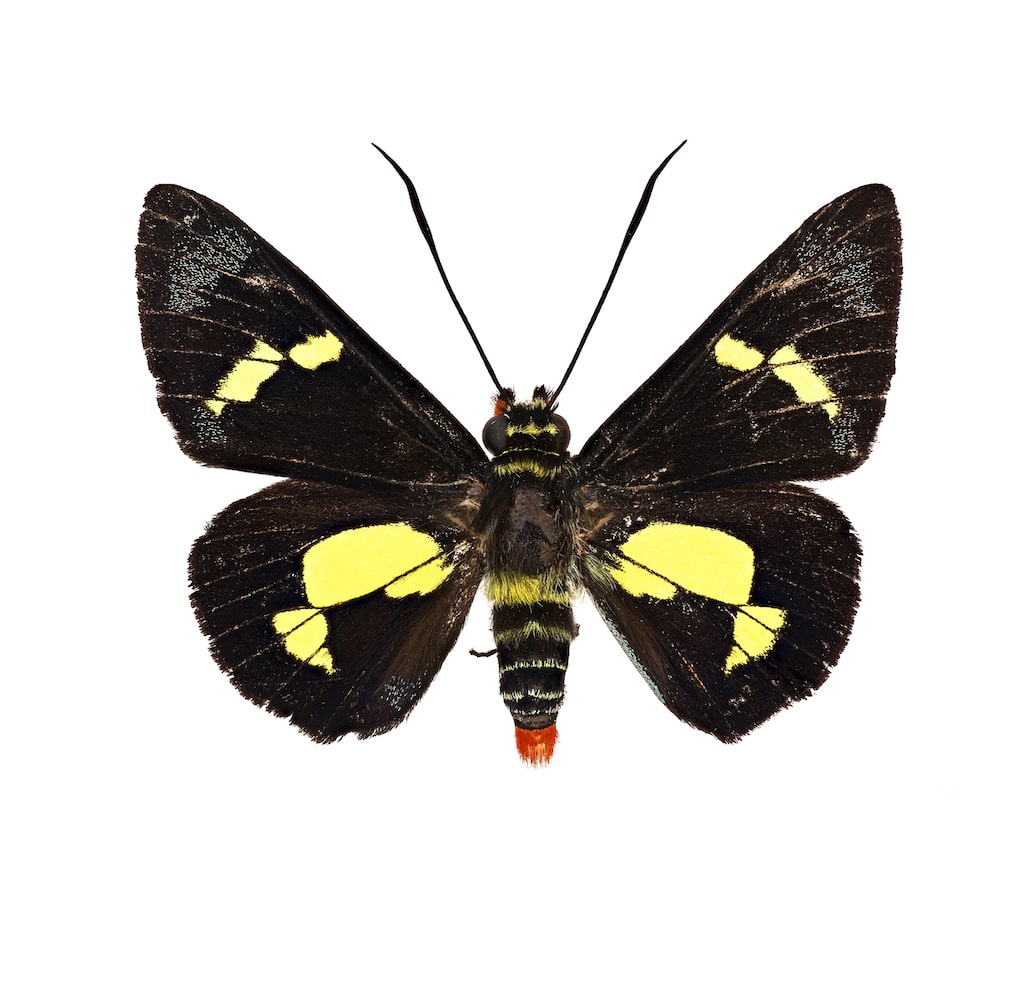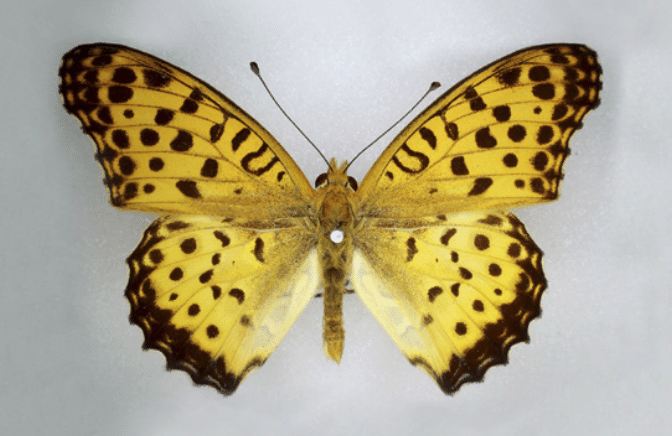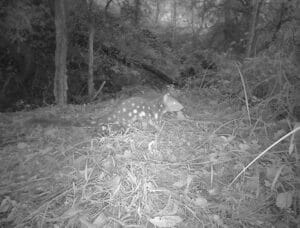This article has been kindly submitted by Dr Geoff Williams OAM AM PhD (UNSW), longtime member of Manning Coastcare.
The Joyce Street Reserve at Crowdy Head is the subject of a habitat restoration project with the help of Manning Coastcare. However, the project also includes planting strategies to hopefully aid the conservation of two endangered Australian butterflies; namely the ‘Regent skipper’ Euschemon rafflesia rafflesia and the ‘Australian Fritillary’ Argyreus hyperbius.
The ‘Regent skipper’ is a relatively large, black and distinctively yellow banded, fast flying member of the family Hesperiidae, and is known to occur locally in lowland rainforests. Adults are active in late summer. Larvae feed exclusively on the leaves of the genus Wilkiea, of which only Wilkiea huegeliana appears to occur at this latitude. Privately and Council sourced shrubs have been planted in numbers on the margins and within the understorey of the relict rainforest at the reserve. Larvae knit overlapping leaves to form a shelter and from which they emerge at night to feed. The larval food plant itself is of interest as the small flowers are pollinated by a single species of thrips (Thrips setipennis) that enter the small urn-shaped flowers via a tiny apical ostiole (see Williams, G ‘2nd Edition Flowering of Australia’s Rainforests: Pollination Ecology and Plant Evolution’ CSIRO Publishing 2021).
The ‘Australian Fritillary’ is a large member of the family Nymphalidae. The species is brown with numerous black dots on fore- and hind wings, with adults ranging in size from about 60-66 mm in wing width. Although the species is distributed northwards into SE Asia and India the subspecies Argyreus hyperbius inconstans is an endemic form and is restricted in range to eastern Australia from SE Queensland, and with a southern record from the vicinity of Port Macquarie. Populations are disjunctive in distribution. Suitable habitat occurs in coastal zones of the Manning, however, in nature larvae are only known to feed on the small herbaceous ‘Spear-leaved Violet’ Viola betonicifolia: the reproductive ecology of V. betonicifolia is poorly known, with the availability of the foodplant being a major obstacle to the foundation of new butterfly populations and the survival of existing ones. A small number of plants have been sourced, planted in lower sections of the reserve, and are monitored to check their survival.






